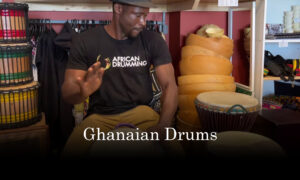Introduction to Pysanka Egg
This blog is about the beautiful art of Pysanka Egg of Ukraine. Nestled in the heart of Eastern Europe, Ukraine boasts a rich cultural tapestry woven with traditions that date back centuries. One such tradition that has stood the test of time is the art of Pysanka crafting. Pysanka, derived from the Ukrainian word “pysaty,” meaning “to write,” refers to intricately decorated Easter eggs that hold deep cultural and historical significance. Let’s embark on a journey through the history, evolution, and modern outlook of Pysanka Egg craft, exploring its roots, major turning points, and contemporary collaborations.
Historical Evolution
The roots of Pysanka Egg craft can be traced back to ancient times, with evidence suggesting that decorated eggs were used in various cultures as symbols of fertility and rebirth. However, the practice truly blossomed in Ukraine, where it became an integral part of the Easter celebration.
The origins of Pysanka in Ukraine can be dated as far back as the pre-Christian era. Archaeological discoveries indicate that Slavic tribes adorned eggs with symbols and motifs representing the sun, animals, and plants. These early examples were not only decorative but also held spiritual significance, symbolizing the cycle of life and the renewal of nature.
As Christianity spread across the region, the practice of Pysanka adapted to incorporate Christian symbols and stories. The eggs became a canvas for religious expression, with intricate designs depicting biblical scenes and symbols associated with Easter and the Resurrection.
Major Turning Events
The craft of Pysanka Egg faced challenges during various historical periods, including Mongol invasions, the Polish-Lithuanian Commonwealth, and the Soviet era. Despite these turbulent times, Pysanka persisted, serving as a resilient expression of Ukrainian identity and cultural pride.
One significant turning point in the history of Pysanka came during the 19th century with the emergence of the so-called “Pysanka Renaissance.” This cultural revival saw a renewed interest in traditional folk art, including Pysanka crafting. Artists and craftsmen began to study and document the intricate designs, passing down the techniques from one generation to the next.
The 20th century brought both tragedy and triumph for Pysanka Egg craft. The Ukrainian diaspora played a crucial role in preserving and promoting the tradition, particularly during the Soviet era when cultural expression was suppressed. In the face of adversity, Pysanka Egg became a powerful symbol of resilience and cultural identity for Ukrainians around the world.
Modern Outlook
In the contemporary era, Pysanka craft has experienced a renaissance, with a new generation of artists infusing the tradition with modern interpretations. The art form has evolved beyond traditional Easter eggs to include larger decorative pieces, exhibitions, and collaborative projects with designers.
One notable modern development is the collaboration between Pysanka artists and contemporary designers. This fusion of traditional craftsmanship with modern aesthetics has resulted in unique and innovative creations that appeal to a broader audience. The collaboration between Pysanka artists and designers brings fresh perspectives to the ancient craft, making it relevant in today’s world.
Collaborations with artists and designers
Several Ukrainian artists have embraced collaborations with designers, blending the time-honored techniques of Pysanka with contemporary design principles. One such collaboration involves renowned Pysanka artist Maria Prymachenko and contemporary designer Ivan Honchar.
Maria Prymachenko, a self-taught folk artist, gained international acclaim for her vibrant and imaginative Pysanka creations. Her collaboration with Ivan Honchar, a contemporary designer known for his innovative approach to traditional crafts, resulted in a collection that seamlessly blends traditional motifs with modern design elements. This collaboration not only honors the rich heritage of Pysanka but also introduces it to a new generation of art enthusiasts.
Another noteworthy collaboration is between Pysanka artist Oksana Bilous and fashion designer Daria Shapovalova. Together, they created a line of clothing and accessories featuring Pysanka-inspired designs. This collaboration bridges the gap between traditional folk art and contemporary fashion, showcasing the versatility and adaptability of Pysanka Egg.
Conclusion
The art of Pysanka craft in Ukraine has transcended time, weathering historical storms and evolving to captivate the hearts of generations. From its ancient roots as symbols of fertility to becoming intricate canvases for religious expression, Pysanka has endured as a powerful cultural emblem. The collaboration between Pysanka artists and contemporary designers exemplifies the adaptability of this ancient tradition, ensuring its relevance in the modern world.
As we celebrate the resilience and creativity of Pysanka craft, we recognize the artists and designers who continue to breathe new life into this cherished tradition. The story of Pysanka is not merely a historical account; it is a living testament to the enduring spirit of Ukrainian culture, bridging the past with the present and inspiring future generations to cherish and reinvent their cultural heritage.





























Pingback: Intricate Ukrainian Craft Of Embroidered Ritual Cloths In 5 Mins